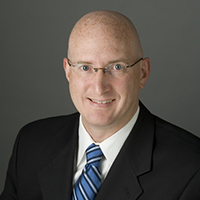You are here
Spatial Patterns of Work, Poverty, & Safety Net Provision in the U.S.
Working Paper*, Mar 15, 2019
Problems of poverty and inequality in the next thirty years will be powerfully shaped by recent spatial changes in need and hardship across America. Poverty problems have become more acute in urban, suburban, and rural communities over the last thirty years, with particularly sharp increases in suburban areas nationwide. The Great Recession and the sluggish nature of labor market growth during the economic recovery that followed have hardened these spatial trends in poverty. The challenges of poverty and joblessness will confront all levels of government and all types of communities – urban, suburban, and rural – for years to come. While it remains the case that a more robust set of public and private safety net programs exists in the U.S. today than at any point in history, many programs of assistance vary widely from place to place. As a result, we should be concerned with gaps in safety net provision across place and with how key programs of assistance have responded (or not responded) to rising need in different geographic locations around the country. This final research report for the US 2050 Initiative presents descriptive analyses of census and safety net program data to better orient future thinking to the spatial variation in poverty, work, and safety net provision that will affect how well policy can tackle hardship and inequality in the coming decades. This report details several key findings:
- Today, there are more people living in poverty and in deep poverty in the suburbs of our largest cities than in cities themselves.
- Poverty rates rest near historic highs in urban and rural areas, remaining highly concentrated and persistent in many urban and rural places. At the same time concentrated poverty has become much more commonplace in suburban America.
- Changes in the geography of poverty reflect a durable new normal that will persist for several decades, as the economic recovery of the last decade has not altered the relative distribution of poverty between cities, suburbs, and rural communities.
- Federally funded and regulated safety net programs, such as the EITC and SNAP, are responsive temporally and spatially to trends in poverty, while also providing consistent levels of assistance across geography
- A stronger federal role in the Medicaid program through the Affordable Care Act (ACA) and Medicaid’s ability to respond to rising numbers of low-income individuals has led coverage to expand by about 20 percent in metropolitan areas since 2012.
- Nonprofit human services – critical elements of the safety net, but also heavily reliant on local capacity – also are more varied in their presence and responsiveness to poverty across different types of geography. It is estimated that roughly $60 billion in new nonprofit human service spending properly targeted would close resource gaps between urban, suburban, and rural communities.
Deeper descriptive understanding of spatial variation in demographic trends and safety net provision is relevant to researchers, policymakers, and charitable philanthropy alike. Insight into recent spatial trends in joblessness and poverty across the geographic landscape identifies a new set of challenges that will confront local communities, states, and the federal government in the coming decades. Accurate understanding of spatial trends in poverty by place and race also help to challenge popular misconceptions about who is poor and where poverty is located. Debates about future changes to expand, contract, or reform existing safety net programs should be mindful of how different policy tools are differently responsive to poverty across place. Shifting spatial trends in poverty and work also raise new questions that will inform research agendas for social science and policy research communities in the years to come. Moreover, findings from this project should be relevant to strategic thinking in charitable philanthropy about pathways for enhancing the presence and capacity of nonprofit human service organizations. Apart from how philanthropy can deploy existing funding more effectively and mobilize new resources, charitable nonprofits and foundations can work more intentionally to cultivate the next generation of indigenous community leaders in high-need, underserved areas.

Scott Allard
Scott W. Allard is the Daniel J. Evans Endowed Professor of Social Policy at the Evans School of Public Policy and Governance at the University of Washington with expertise in poverty, inequality, and social policy. Allard is author of Out of Reach: Place, Poverty, and the New American Welfare State (2009, Yale University Press), which examines the spatial and organizational challenges confronting local safety net providers. His latest book Places in Need: The Changing Geography of Poverty in America (2017, Russell Sage Foundation Press), focuses on the changing geography of poverty and its implications for the safety net. Allard is a nonresidential senior fellow at the Brookings Institution Metropolitan Policy Program and an affiliate of the Institute for Research on Poverty at the University of Wisconsin-Madison.
*This working paper was made possible by the US 2050 project, supported by the Peter G. Peterson Foundation and the Ford Foundation. The statements made and views expressed are solely the responsibility of the authors.
